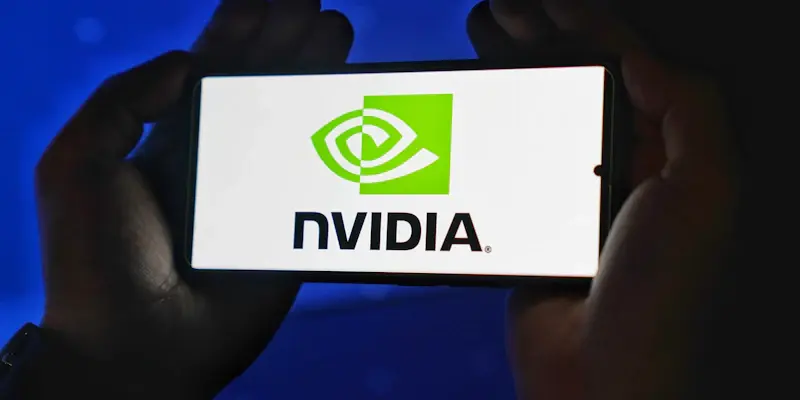Nvidia’s President and CEO, Jensen Huang, has provided an ambitious outlook for the company, emphasizing the mainstream adoption of AI across various sectors such as delivery and shopping services. As AI gradually permeates daily life, Huang hinted at how even simple tasks like delivering a quart of milk involve cutting-edge technology. With this pervasive role of AI, Nvidia aims to sustain its rapid revenue growth by concentrating on the integration of AI into everyday applications. During its Q4 2025 earnings call, Nvidia reported a remarkable increase in revenues, nearly doubling year over year by 78%, reaching an astounding $39.3 billion. The fiscal year revenue soared even higher by 114% to $130.5 billion, primarily driven by the ramped-up production of the Blackwell GPU family introduced the previous year.
Explosive Revenue Growth
The overarching trend contributing to Nvidia’s ability to sustain its rapid growth lies in its capitalization on the post-ChatGPT wave of generative AI enthusiasm. Since February 2023, when the company reported relatively flat growth on $27 billion in fiscal year revenues, Nvidia’s revenue has more than quadrupled within 24 months. This dramatic rise stems from the increased hardware consumption driven by the hype surrounding large language model technologies.
A significant portion of these gains can be traced back to large cloud service providers (CSPs). Hyperscalers, including AWS, Azure, Google Cloud, and Oracle Cloud Infrastructure, accounted for approximately half of the $282 billion spent on data center hardware and software in 2024. Investments specifically in AI hardware were enormous, with an estimated $120 billion allocated for the same year. Nvidia revealed that around half of its $35.6 billion Q4 data center segment revenue came from these major CSPs, reflecting nearly double sales year over year. The surging demand for AI has prompted CSPs to integrate Nvidia’s advanced Blackwell GPUs to enhance their capacities.
Enterprise customers have equally contributed to Nvidia’s immense success. They comprised the remaining half of the data center hardware sales, driven by the momentum of model fine-tuning, agentic workflows, and GPU-accelerated data processing. As AWS, Microsoft, and Google plan to sustain their high levels of infrastructure spending to bolster AI compute capacity in the current year, this trend is expected to benefit Nvidia’s GPU business significantly. Nvidia’s strategy focuses on leveraging enterprise consumption to further drive revenue growth with plans to roll out a new chip configuration, Blackwell Ultra, in the latter half of the year.
Future of AI Integration
Looking ahead, Nvidia envisions enterprise consumption substantially driving revenue growth, as Huang suggested that such consumption would eventually surpass AI model training. He highlighted the importance of post-training scaling, which includes reinforcement learning, fine-tuning, and model distillation. These processes require significantly more compute than pretraining alone. Additionally, Huang underscored the significance of inference time scaling and reasoning, where a single query puts a considerable strain on compute power. These areas are critical dimensions that Nvidia is banking on for future growth.
Moreover, Nvidia’s continued success depends on the widespread adoption of AI across various applications and sustained investments in infrastructure by major CSPs and enterprises. By targeting everyday AI usage, Nvidia aims to perpetuate its impressive revenue growth trajectory. The coming years could witness remarkable advancements facilitated by Nvidia’s high-performance GPUs, making AI more accessible and integrated into daily life.
Nvidia’s strategy to maintain its rapid revenue growth spends a great deal on anticipating future demands and needs. By developing powerful AI hardware like Blackwell Ultra and refining processes such as reinforcement learning and model distillation, Nvidia stands poised to revolutionize how enterprises and consumers utilize AI. This forward-looking approach ensures the company remains an integral part of the AI landscape, providing robust solutions to meet the booming demand.
Expanding Market Horizons
Nvidia’s rapid growth is largely due to capitalizing on the surge of enthusiasm for generative AI following the release of ChatGPT. Since February 2023, when Nvidia reported $27 billion in fiscal year revenue, the company’s revenue has quadrupled in less than 24 months. This surge is driven by increased demand for hardware linked to large language model technologies.
A significant portion of this revenue boost can be attributed to large cloud service providers (CSPs) like AWS, Azure, Google Cloud, and Oracle Cloud Infrastructure. In 2024, these hyperscalers accounted for about half of the $282 billion spent on data center hardware and software, with $120 billion specifically targeted for AI hardware. Nvidia revealed that about half of its $35.6 billion Q4 data center revenue came from these CSPs, nearly doubling year-over-year.
Enterprise customers also played a crucial role, making up the remaining half of data center hardware sales, driven by model fine-tuning, agentic workflows, and GPU-accelerated data processing. As major CSPs are expected to maintain high levels of infrastructure spending to support AI compute capacity this year, Nvidia’s GPU business is set to benefit significantly. The company plans to further drive growth by introducing the new Blackwell Ultra chip in the latter half of the year, leveraging enterprise consumption.

